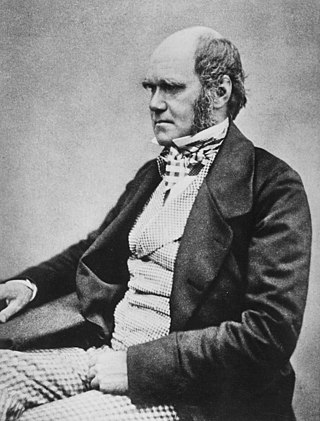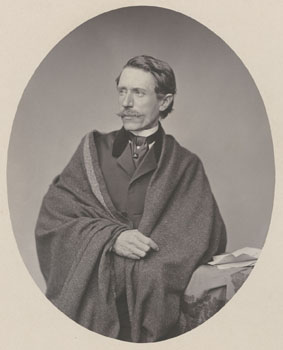Related Research Articles

Baron Siméon Denis Poisson FRS FRSE was a French mathematician and physicist who worked on statistics, complex analysis, partial differential equations, the calculus of variations, analytical mechanics, electricity and magnetism, thermodynamics, elasticity, and fluid mechanics. Moreover, he predicted the Arago spot in his attempt to disprove the wave theory of Augustin-Jean Fresnel.

Johann Peter Gustav Lejeune Dirichlet was a German mathematician. In number theory, he proved special cases of Fermat's last theorem and created analytic number theory. In analysis, he advanced the theory of Fourier series and was one of the first to give the modern formal definition of a function. In mathematical physics, he studied potential theory, boundary-value problems, and heat diffusion, and hydrodynamics.
The year 1812 in science and technology involved some significant events, listed below.

Bernard Bolzano was a Bohemian mathematician, logician, philosopher, theologian and Catholic priest of Italian extraction, also known for his liberal views.

Darwin's finches are a group of about 18 species of passerine birds. They are well known for their remarkable diversity in beak form and function. They are often classified as the subfamily Geospizinae or tribe Geospizini. They belong to the tanager family and are not closely related to the true finches. The closest known relative of the Galápagos finches is the South American dull-coloured grassquit. They were first collected when the second voyage of the Beagle visited the Galápagos Islands, with Charles Darwin on board as a gentleman naturalist. Apart from the Cocos finch, which is from Cocos Island, the others are found only on the Galápagos Islands.

John Gould was an English ornithologist who published monographs on birds, illustrated by plates produced by his wife, Elizabeth Gould, and several other artists, including Edward Lear, Henry Constantine Richter, Joseph Wolf and William Matthew Hart. He has been considered the father of bird study in Australia and the Gould League in Australia is named after him. His identification of the birds now nicknamed "Darwin's finches" played a role in the inception of Darwin's theory of evolution by natural selection. Gould's work is referenced in Charles Darwin's book, On the Origin of Species.
The year 1825 science and technology involved some significant events, listed below.
The year 1828 in science and technology involved some significant events, listed below.
The year 1829 in science and technology involved some significant events, listed below.
The year 1838 in science and technology involved some significant events, listed below.
The year 1841 in science and technology involved some significant events, listed below.
The year 1781 in science and technology involved some significant events.
The year 1813 in science and technology involved some significant events, listed below.
The year 1809 in science and technology involved some significant events, listed below.
The year 1785 in science and technology involved some significant events.
In mathematics, a Dirichlet problem asks for a function which solves a specified partial differential equation (PDE) in the interior of a given region that takes prescribed values on the boundary of the region.
The Transmutation of species and transformism are 18th and early 19th-century ideas about the change of one species into another that preceded Charles Darwin's theory of evolution through natural selection. The French Transformisme was a term used by Jean Baptiste Lamarck in 1809 for his theory, and other 18th and 19th century proponents of pre-Darwinian evolutionary ideas included Denis Diderot, Étienne Geoffroy Saint-Hilaire, Erasmus Darwin, Robert Grant, and Robert Chambers, the anonymous author of the book Vestiges of the Natural History of Creation. Such ideas were associated with 18th century ideas of Deism and human progress. Opposition in the scientific community to these early theories of evolution, led by influential scientists like the anatomists Georges Cuvier and Richard Owen, and the geologist Charles Lyell, was intense. The debate over them was an important stage in the history of evolutionary thought and influenced the subsequent reaction to Darwin's theory.
The inception of Darwin's theory occurred during an intensively busy period which began when Charles Darwin returned from the survey voyage of the Beagle, with his reputation as a fossil collector and geologist already established. He was given an allowance from his father to become a gentleman naturalist rather than a clergyman, and his first tasks were to find suitable experts to describe his collections, write out his Journal and Remarks, and present papers on his findings to the Geological Society of London.

Charles Robert Darwin was an English naturalist, geologist and biologist, widely known for his contributions to evolutionary biology. His proposition that all species of life have descended from a common ancestor is now generally accepted and considered a fundamental concept in science. In a joint publication with Alfred Russel Wallace, he introduced his scientific theory that this branching pattern of evolution resulted from a process he called natural selection, in which the struggle for existence has a similar effect to the artificial selection involved in selective breeding. Darwin has been described as one of the most influential figures in human history and was honoured by burial in Westminster Abbey.

Moritz Wagner was a German explorer, collector, geographer and natural historian. Wagner devoted three years (1836–1839) to the exploration of Algiers: it was here that he made important observations in natural history, which he later supplemented and developed: that geographical isolation could play a key role in speciation.
References
- ↑ Sulloway, F. J. (1982). "The Beagle collections of Darwin's finches (Geospizinae)" (PDF). Bulletin of the British Museum (Natural History), Zoology Series. 43 (2): 49–94. Archived from the original (PDF) on 2012-05-16.
- ↑ Sulloway, F. J. (1982). "Darwin and his finches: the evolution of a legend" (PDF). Journal of the History of Biology. 15: 1–53. CiteSeerX 10.1.1.458.3975 . doi:10.1007/BF00132004.
- ↑ Marchione, William P. (1998–2001). "Horace Gray: Father of the Boston Public Garden". Brighton Allston Historical Society. Retrieved 2013-11-13.
- ↑ Kanemitsu, Shigeru; Jia, Chaohua (2002). Number Theoretic Methods: future trends. Springer. pp. 271–274. ISBN 978-1-4020-1080-4.
- ↑ Gowers, Timothy; Barrow-Green, June; Leader, Imre (2008). The Princeton Companion to Mathematics. Princeton University Press. pp. 764–765. ISBN 978-0-691-11880-2.
- 1 2 Crilly, Tony (2007). 50 Mathematical Ideas you really need to know. London: Quercus. ISBN 978-1-84724-008-8.
- ↑ Poisson, S.-D. (1837). Probabilité des jugements en matière criminelle et en matière civile, précédées des règles générales du calcul des probabilitiés. Paris: Bachelier.
recherches sur la probabilité des jugements en matière criminelle.
- ↑ Wantzel, L. (1837). "Recherches sur les moyens de reconnaître si un problème de géométrie peut se résoudre avec la règle et le compas". Journal de Mathématiques Pures et Appliquées. 1: 366–372.
- ↑ U.S. Patent No. 132. "Improvement in Propelling Machinery by Magnetism And Electro-Magnetism". Google patents. Retrieved 2011-12-13.
- ↑ van Dulken, Stephen (2001). Inventing the 19th Century. London: British Library. pp. 82–3. ISBN 0-7123-0881-4.
- ↑ Penguin Pocket On This Day. Penguin Reference Library. 2006. ISBN 0-14-102715-0.
- ↑ Ferry, Kathryn (2003). "Printing the Alhambra: Owen Jones and Chromolithography". Architectural History. 46: 175–188.
- ↑ U.S. Patent No. 491.
- ↑ Carlisle, Rodney P. (2004). Scientific American Inventions and Discoveries: All the Milestones in Ingenuity – From the Discovery of Fire to the Invention of the Microwave Oven . New Jersey: Wiley. ISBN 0-471-24410-4.
- ↑ Stokstad, Marilyn; Cateforis, David; Addiss, Stephen (2005). Art History (2nd ed.). Upper Saddle River, New Jersey: Pearson Education. pp. 964–967. ISBN 0-13-145527-3.
- ↑ "Copley Medal | British scientific award". Encyclopedia Britannica. Retrieved 22 July 2020.